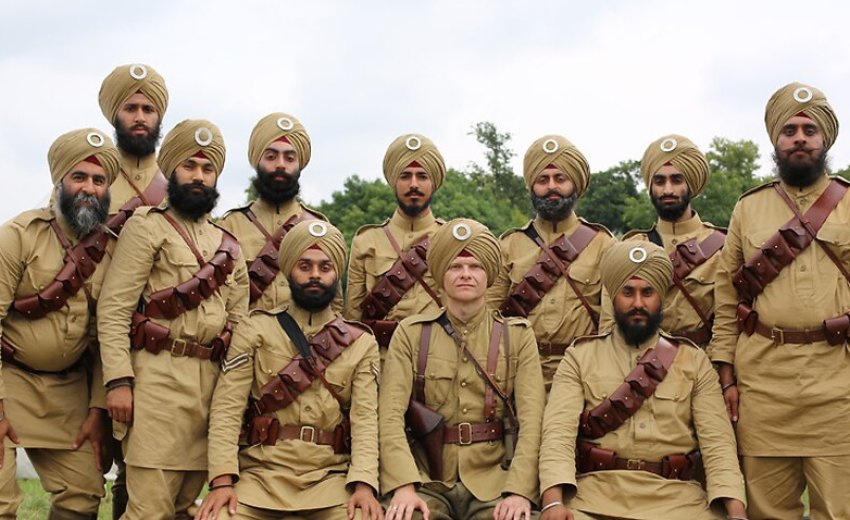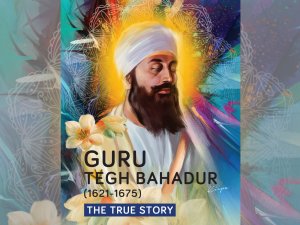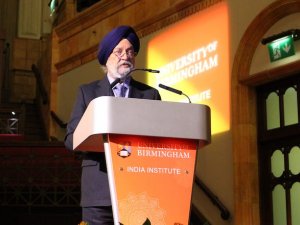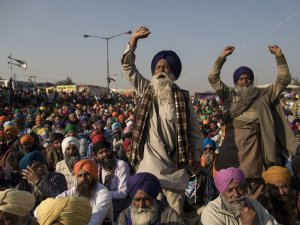- An ongoing inquiry which preserves documents and reports relating to the history of institutional racism against British Sikhs would be an invaluable research-based educational community resource.
“There was a time when the British insisted that Sikhs joining the colonial British Army must be Amritdhari (fully initiated), practicing Sikhs wearing all their articles of faith. During the two World Wars, some 1.5 million Amritdhari Sikhs fought for the freedom of the United Kingdom, Europe and humankind. 83,000 Sikhs gave their lives, whilst 110,000 were wounded. Many gallant Sikhs were awarded Victoria Crosses (or equivalent awards) for their bravery. Sikhs have been living in some Western countries like the United Kingdom, Canada and America as a significant visible community for well over half a century. Before that, during the British colonial period, they were encouraged to migrate to countries in East Africa and SouthEast Asia as soldiers, policemen and skilled workers. In recent years Sikhs have migrated to Australia and even to South American countries. Yet, direct and indirect challenges to visible Sikh identity have increased, especially since 9/11; so that their sense of belonging in the Western countries they live in as hardworking and law abiding citizens, has been "put in jeopardy".
(Gurmukh Singh OBE, Challenges to Sikh Identity in the West, Sikh Missionary Society UK and Sikhnet.)
“Institutional racism” was first defined by Sir William Macpherson in the UK's Lawrence report (1999) as: "The collective failure of an organization to provide an appropriate and professional service to people because of their colour, culture, or ethnic origin. It can be seen or detected in processes, attitudes and behaviour that amount to discrimination through prejudice, ignorance, thoughtlessness, and racist stereotyping which disadvantage minority ethnic people.”
Institutional racism in the government and agencies, legislative assemblies, the courts, the health and educational systems and other public and private sector bodies is directed against people like the Sikhs because they are seen to be “different”. They are different not just because of their visible identity in case of Amritdhari (initiated) Sikhs and Sikhs who keep turbans and beards but also due to their association with a way of life based on creed, culture and customs.
The Jewish people are not visibly different from the white majority but there is institutional discrimination against them. This clear understanding for the basis of “them and us” discrimination because “they” are “different” is important, for “different” does not refer to difference in physical appearance only as some Sikhs who claim to represent Sikhs, believe. Those same Sikhs have also misled the policy makers and those who collect statistics about communities like the Office for National Statistics in the UK to count and monitor their treatment. Miri-Piri (politico-spiritual) Sikhi is much more than a “religion” in the traditional sense. It is a whole-life temporal-spiritual paradigm which gave birth to a distinct people, a qaum or a nation.
Sikhs are victims of institutional discrimination because of their qaumi ethos; their Sikh way of life, values, behaviour and characteristics, of which, varying degrees of religious observance is one aspect. Sikhs leading Panthic “morchas” are not always very “religious”. For example, the recent farmers protest against unjust and oppressive Indian farm laws is led by Sikhs fired mainly by liberating Sikh values. The Sikhs range from Amritdhari, Naam Abhiyasi (fully practising) GurSikhs to Sikhs who hardly observe Sikh Reht but have deep-rooted qaumi sentiments expressed along the line, “We are the proud Sikhs of Guru Nanak- Guru Gobind Singh”. For them the Gurus are their qaumi Miri-Piri heroes. These are Sikhs from all over India and not just Sikhs from what is left of Panjab. That is in response to those who misleadingly argue the “Panjabi qaum” case in the context of Sikh “ethnicity” as defined by the Lords in the Mandla case 1983.)
One important aspect of preserving the history and heritage of UK Sikhs is to keep a record of institutional racism against the community by keeping a digital library of old court cases, reports and images. This would be a historical record of the challenges faced by the community in settling down while trying to preserve its own religio-cultural identity. Otherwise, “The Sikhs are a role model community and provide an exceptionally interesting example of successful integration whilst maintaining a very visible and distinctive religious identity.” (The Sikh Manifesto 2015-2020.) In fact, it has been suggested that all Sikh diaspora countries should keep and maintain such a record for next generations.
There can be parallel projects like Sikh museums of early settlers where actual old photos, artefacts and documents are displayed for the benefit of next generations. To some extent such initiatives have been ongoing through Anglo-Sikh heritage and other projects undertaken by organisations and dedicated individuals.
Recent findings of the prolonged Daniel Morgan murder investigation into Scotland Yard remind UK Sikhs of their own experience in dealing with public servants and ministers. Civil servants work across departments and any form of institutional weaknesses and biases in the State system are unlikely to be isolated. The Sikh interest is in evidence which shows institutional bias against them because they are “different”.
As a lawyer noted, “The State and political powers prefer to deal with a uniform set of rules, values and ideas and tend to conspire against diverse cultures, religions and traditions.” (Sikh lawyer Sukhvinder Thandi). So, is there evidence that State political powers – ministers and civil servants – actually “conspire against diversity” represented by the distinct Sikh community? There is a need to collate such evidence through a process like an inquiry e.g. British Sikh Inquiry into institutional racism in the UK.
Due to long-standing Anglo-Sikh relations, Sikhs expected full legal safeguards for their visible Sikh identity and culture including religious practice. It was precisely the distinctive Sikh identity and what it stood for, which was valued and promoted by colonial Britain. Yet, when Sikhs arrived in the UK after the 1947 partition, they were compelled by economic circumstances to discard their proud Sikh identity. That suggests a failure on the part of UK policy makers to accommodate diversity. The community is unlikely to recover from that early identity loss passed on as negative heritage to next generations. Numerous court battles had to be fought by the more resilient and determined Sikhs to secure even basic rights.
The evidence produced before panels and courts is there because some who stood up to prejudice and racism are still around. All that evidence should be collated and preserved. It takes a prolonged, determined and expensive public inquiry like the Daniel Morgan Independent Panel investigation into police handling of the murder case to expose any wrong doing by public servants. It is important to collate documented evidence of institutional racism, corruption and cronyism over the changing race relation period in the UK over the last 60 years when Sikhs started settling in significant numbers.
For example, in recent years, over half a million British Sikhs have been denied their legal right to be counted and monitored as a distinct ethnic group under the current system. Despite taking the matter to the courts, they have not been allocated their own ethnicity (qaumi) tick box in the Census. Leaving aside ignorance about Sikhi Miri-Piri tradition, objections based on trade relations with Indian have been used by some. Unless there is a public investigation into the consultation and decision-making processes in the Office for National Statistics (ONS), British Sikhs will remain totally confused about this issue which seriously affects their rights as a distinct community. That is a wrong perpetrated against a whole community. That is a conspiracy against diversity referred to by Sikh lawyer Sukhvinder Thandi quoted above.
To save and remember qaumi heritage and history is to save qaumi existence and identity. In itself it is a process of self-identification in a multi-cultural society. To respect and to have pride in one's own identity and way of life while respecting that of others in a spirit of unity in diversity. That is the true spirit of democratic multi-culturalism. That is “Anekta meh ekta” principle preached by Guru Gobind Singh.
Evidence of institutional racism requires case histories including documentation relating to cases taken to the courts and tribunals. The process would be in the nature of an inquiry by the community. Anyone arriving in the UK in the late 1950’s and early 1960’s was compelled to cut his hair and discard his turban. I have seen first generation Sikhs looking at their own images in mirrors after discarding their proud Sikh identity and crying aloud in anguish. What would their parents and families think of them back home?
Sikhs became more organised and took matters to the courts to secure their basic religious rights. It was an uphill struggle and some rights were won in the courts but most grudgingly conceded by the public and private sectors. The obstructive challenges came from the policy makers, the senior civil servants and ministers. As is the Sikh experience in the case of Sikh ethnic (qaumi) tick box in the Census, such challenges continue. Regrettably, there are those within the community who claim to be “leaders” or “representatives” and oblige the establishment by making compromises from which the community cannot recover for many generations.
As questions are being raised in the West about the damage done by colonial attitudes and institutional racism, the Sikhs too need to take timely steps to record their own experience.





